Samsung Galaxy S25 Ultra review
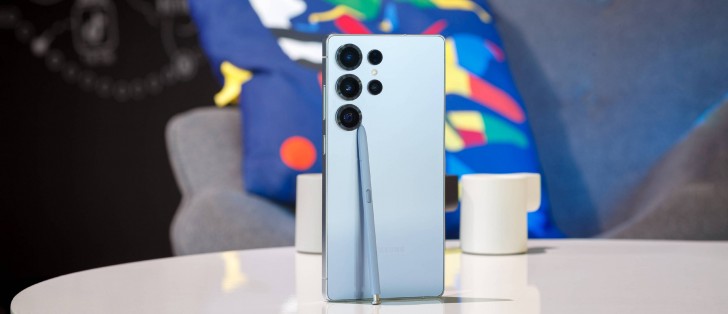
6.9-inch OLED is pretty good
One of the changes to this year's Galaxy Ultra is the display - its diagonal now stands at 6.9 inches as opposed to the 6.8 inches of last-year's model. The difference is about as big and noticeable as it sounds - aside from the ergonomics developments that we mentioned on the previous page, the increase in screen estate can easily go unnoticed.
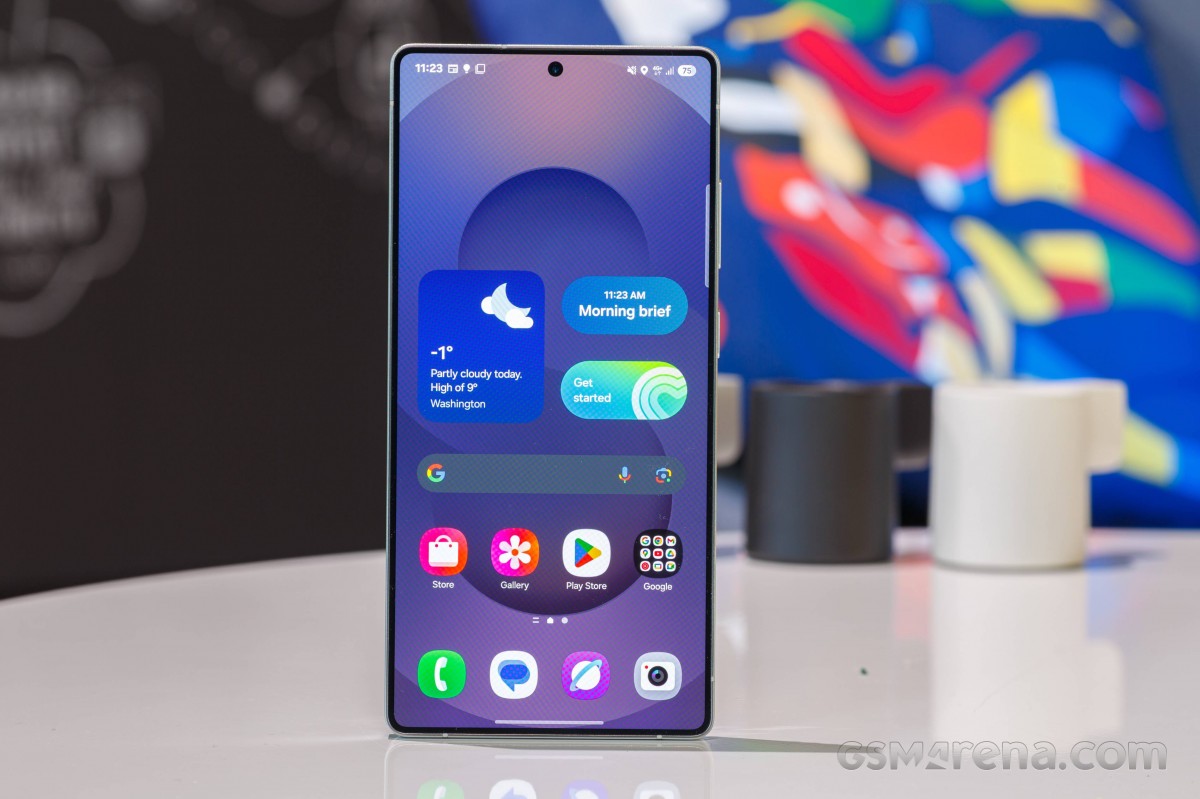
That's not to say there's a lot that's wrong with the S25 Ultra's display. It's a QHD+ panel (1,440x3,120px resolution, 19.5:9 aspect ratio, 498ppi density) with a 120Hz maximum refresh rate. It's missing Dolby Vision video support (which is to be expected since Samsung is backing the competing HDR10+ standard) and Samsung only promises 16M colors (8-bit panel) so you probably won't be getting the smoothest of gradients - if you go out of your way to look for them. It's a solid display panel, just not one that's cutting edge, going by the specs.
In our brightness testing, the sentiment turned out about the same. The S25 Ultra posted a reasonable but far from remarkable 1400-ish nits in adaptive brightness mode, and was good for a little under 800nits in manual operation.
The reasoning stands that if you have a particularly non-reflective glass covering those pixels, perhaps they don't need to be shining all that bright for you to have a great enough viewing experience. While that's correct, it doesn't mean Samsung shouldn't be doing a bit more in the numbers race.
It's worth pointing out that the S25 Ultra wasn't particularly keen on keeping its maximum brightness for too long. We don't have the habit of measuring how long it takes before phones dim down from their maximum levels (a lot of variables involved), but this one struck us as unusually quick to lower its brightness. Again, you'll still have little issue seeing what's on the screen, but it doesn't feel like we are treated to a premium experience. For what it's worth, the graininess that S24 Ultra suffered from (or was criticized for on the internet) doesn't appear to be present here.
Refresh rate
The Galaxy way of handling refresh rate is by offering two modes - Adaptive and Standard. Words don't mean much though, since both modes are adaptive and will continuously switch refresh rates, but only the Adaptive one maxes out at 120Hz, while Standard is limited to 60Hz.
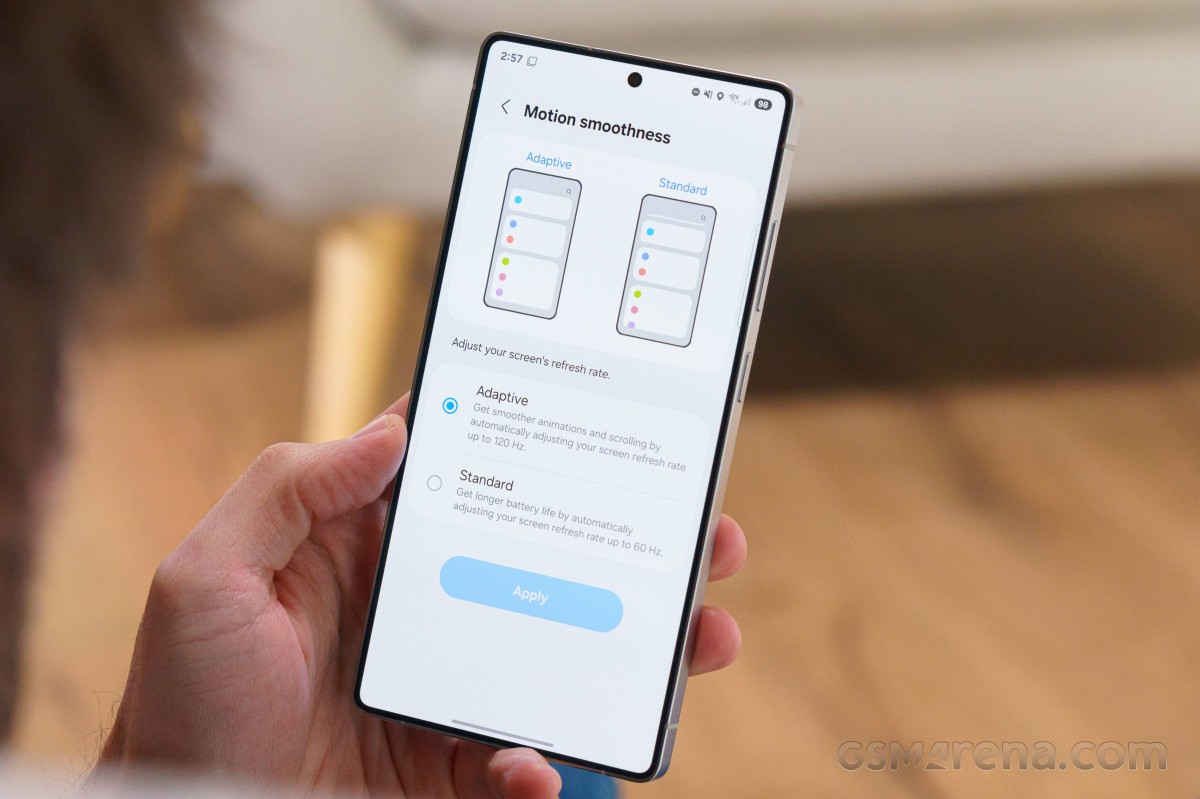
There are certain small differences, in our experience - if you're in Standard mode, 24fps and 48fps videos will get a 60Hz refresh rate, while in Adaptive you'd be looking at matching Hz modes. We wouldn't say it really makes a visible difference, though.
When in Adaptive mode, Chrome, for example, will switch to 60Hz when you're not touching the display, even when there's moving content that may have 120fps to show (though we can't imagine all of them being equally important).
We also got the phone to work at 120Hz in games.
Streaming and HDR
The S25 Ultra supports HDR10 and HDR10+ - no Dolby Vision video here, as usual. YouTube served us HDR streams and so did Netflix, in FullHD too thanks to the Widevine L1 compliance.
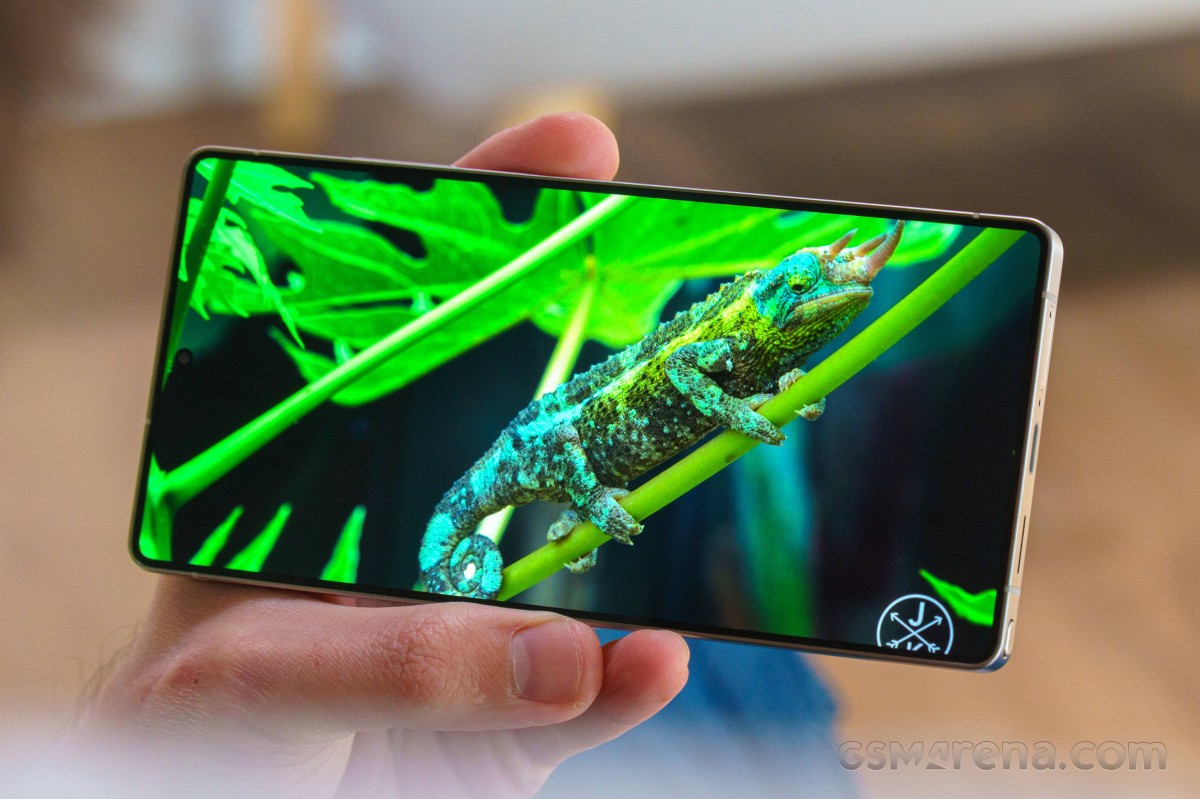
Sure enough, the phone also supports the Android Ultra HDR standard and will boost highlights for metadata-enhanced photos taken on it, or on other standard-abiding handsets. It works in the in-house Gallery, as well as Google Photos and Chrome.
Samsung Galaxy S25 Ultra battery life
The S25 Ultra is powered by a 5,000mAh battery - a relatively low capacity for 2025, when we're routinely seeing 6,000mAh in high-end phones, sometimes more. Samsung isn't too quick to adopt the silicon carbon anode type of battery - unlike most premium models in the Android space for this generation.
The Galaxy did pretty well still, despite being somewhat underequipped in comparison to some of the major players from China. We measured modest but not insignificant improvements over the previous generation in our gaming test and in video playback, with web browsing and voice call time remaining essentially the same as last year.
An iPhone 16 Pro Max remains a better option for longevity in basic tasks with the screen on, though the Galaxy still fares better than a Pixel 9 Pro XL.
Update, 03 Feb 2025: Following further retesting, the voice call result has been adjusted to a lower figure after the review publishing. We've updated the Active Use score below to reflect the new results.
Our new Active Use Score is an estimate of how long the battery will last if you use the device with a mix of all four test activities. You can adjust the calculation based on your usage pattern using the sliders below. You can read about our current battery life testing procedure here. For a comprehensive list of all tested devices so far, head this way.
Charging speed
The Galaxy S25 Ultra is rated for charging at up to 45W, and there is no charger in the box. We used a Samsung 45W adapter (the EP-T4510, the second-gen one, for those who care) combined with a 5A cable for our testing below.
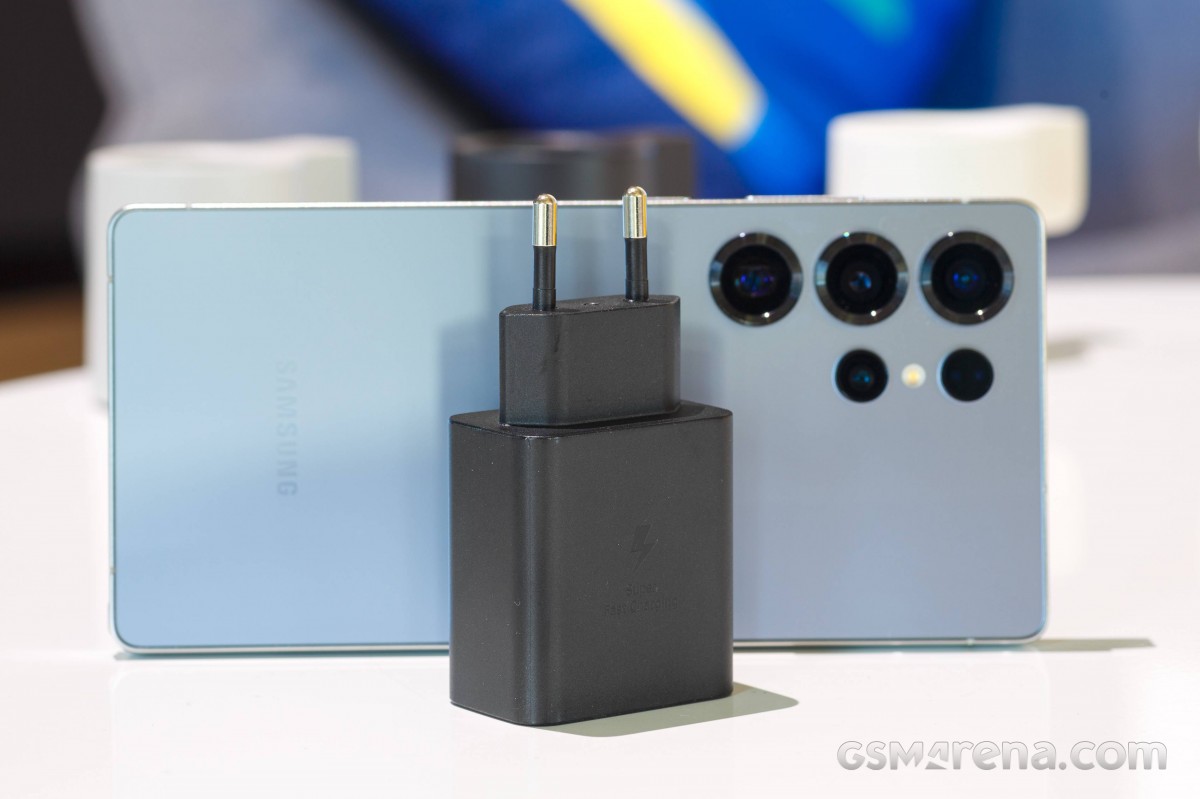
Update, 09 Feb: With further testing, we found out that Galaxy S25 Ultra no longer requires a 5A cable/charger to reach its max charging power. The 3A cable that arrives in the box gave us a peak of 39W (13V/3A) when paired with the 45W Samsung charger, which means it can use higher voltage but lower amperes to achieve the same charging power.
This mode of charging is not possible with the S24 Ultra, which requires a 5A cable and a 5A charger to reach its peak charging power of 42W (9V/4.6A).
What's great about this change is that now you can enjoy the fastest possible charging speeds on the S25 Ultra with the cable in the box and any USB-PD/PPS charger you may have that's only capable of outputting 3-3.25A max (like many chargers rated at 65W). You can, of course, still use a 5A cable/charger combo if you have one, but this widens your fast charging options considerably.
In our testing, the Galaxy S25 Ultra charged from empty to 100% in 59 minutes, with the indicator showing 72% at the half-hour mark and 41% at the 15-minute checkpoint. These are more or less standard Samsung numbers - or, in other words, relatively slow charging.
It's a better result than the old model, and it's faster than a Pixel 9 Pro XL or an iPhone 16 Pro Max, but waiting for top-ups still feels like more of a burden than it needs to.
The S25 Ultra supports wireless charging and complies with the Qi 2.1 standard. As per the listing at the WPC, the phone can take up to 15W, and we're not seeing Samsung state any higher numbers with proprietary pads, nor have we been able to find proprietary Samsung pads that go above 15W.
The S25 Ultra has a single battery care setting in its menu, but it's got a multi-tiered approach inside once you enable it. The 'Basic' setting prevents constantly charging to 100% if you keep your phone plugged in for a long time, instead waiting for the battery level to drop below 95%, and then starting to charge again. 'Maximum' simply limits the charging level to a custom limit such as 80%/85%/90%/95%, while 'Adaptive' uses 'Maximum' during the night (or, you know, whatever your sleeping habits are) and switches to 'Basic' just before you wake up. There are also toggles to disable fast charging (separate settings for wired and wireless).
Speaker test
The Galaxy S25 Ultra has the usual hybrid stereo speaker setup - there's one speaker on the bottom, and another one up top that also serves earpiece duty. Samsung prefers to keep the channels separate as opposed to sending lower levels of each channel to the opposite speaker, as some others do.
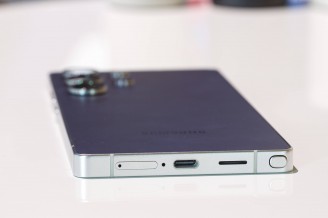
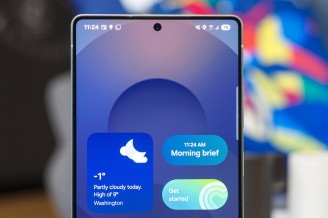
Bottom speaker • Top speaker/earpiece
In our testing, the S25 ultra earned a 'Very Good' rating for loudness, same as the previous generation (even down to the numerical result for integrated loudness), and in the same boat as most of the others in its class.
Sound reproduction is very similar to that of the S24 Ultra with only subtle differences - like a bit more oomph in the low end in certain tracks. We'd definitely still pick the Galaxy over the Pixel, though the iPhone remains superior.
Use the Playback controls to listen to the phone sample recordings (best use headphones). We measure the average loudness of the speakers in LUFS. A lower absolute value means a louder sound. A look at the frequency response chart will tell you how far off the ideal "0db" flat line is the reproduction of the bass, treble, and mid frequencies. You can add more phones to compare how they differ. The scores and ratings are not comparable with our older loudspeaker test. Learn more about how we test here.
Reader comments
- xPandamon
- 23 hours ago
- JHj
It still is square, way more than the other models. It just has slightly rounded corners now. Also no, it is very different from the iqoo 13.
- K9krowl
- 12 May 2025
- KZK
3 months in with a 512GB unit. Pros: Great display & pretty snappy with barely any lag. Battery life isn't spectacular but sufficient for whole day before plugging in. Charging with an Anker GaN 40W is super duper fast. Can go from 2...







